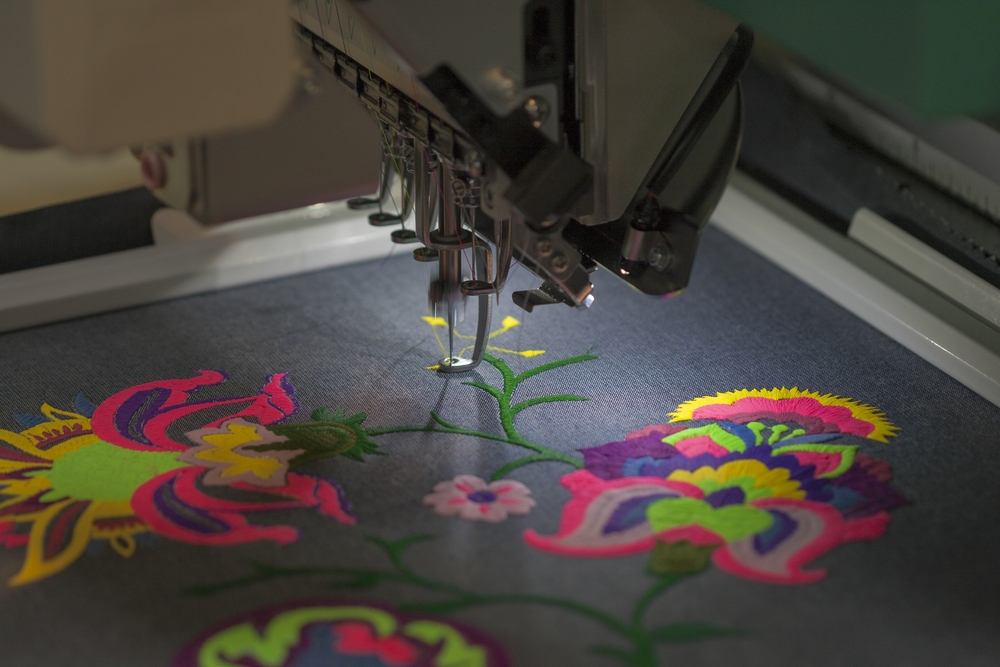Mastering the Embroidery Digitizing Refine: Your Ultimate Overview
Embroidery digitizing is a meticulous craft that needs accuracy and proficiency to convert elaborate designs into electronic styles for equipment needlework. As craftsmens get started on this journey to grasp the needlework digitizing process, a comprehensive understanding of the basics sets the foundation for quality.

Recognizing Needlework Digitizing Basics
Needlework digitizing essentials develop the foundation upon which intricate designs are converted into machine-readable layouts for precise stitching. This preliminary step in the embroidery digitizing process is important for making sure that the last stitched item is a devoted depiction of the initial style. Understanding needlework digitizing basics involves realizing key concepts such as stitch types, sew instructions, thickness, underlay, and pull compensation.
Stitch kinds play a crucial role in determining the aesthetic and textural end result of the stitched layout. By picking the appropriate stitch kind, whether it be satin, fill, or running stitch, digitizers can accomplish the preferred effect and improve the general quality of the needlework. In addition, sew direction affects the circulation and measurement of the layout, while density identifies the spacing and coverage of the stitches.
Additionally, padding sewing provides stability to the style by securing the fabric and stopping distortion throughout the needlework procedure. Draw payment is another essential consideration to neutralize the all-natural tendency of textile to agreement when sewn. Understanding these needlework digitizing essentials is basic for producing professional-quality embroidered items.
Selecting the Right Digitizing Software Program
Choosing the appropriate digitizing software program is a crucial decision that significantly affects the performance and quality of the needlework digitizing procedure. Digitizing for Embroidery. When selecting the appropriate digitizing software application, it is important to consider elements such as the complexity of layouts you intend to create, the user-friendliness of the software program, the degree of client assistance provided, and the compatibility with your embroidery machine
There are various digitizing software program choices readily available in the marketplace, ranging from fundamental programs for beginners to advanced software for specialist digitizers. Some preferred options include Wilcom EmbroideryStudio, Hatch Needlework Software, and PulseID. These software program packages supply a large range of devices and features to aid you produce complex styles effortlessly.
Prior to deciding, it is a good idea to explore the various software alternatives via totally free trials or trials to determine which one ideal matches your requirements. Furthermore, checking out evaluations and looking for referrals from skilled digitizers can provide beneficial insights right into the toughness and weaknesses of each software application package (Digitizing for Embroidery). By carefully assessing your needs and contrasting the functions of various digitizing software application, you can make an educated selection that boosts your embroidery digitizing process
Digitizing Devices and Strategies

Optimizing Layout Setup for Embroidery
Understanding the details of design setups is basic in accomplishing optimal lead to the needlework digitizing process, building upon the foundation laid by understanding digitizing tools and strategies. When enhancing layout settings for needlework, it is necessary to consider aspects such as stitch type, thickness, padding, pull settlement, and enrollment. Sew type choice impacts the total appearance and feeling of the design, with alternatives like satin, fill, and running visit stitches using different structures and impacts. Thickness refers to the spacing and density of stitches, influencing the design's insurance coverage and durability. Proper underlay stitching gives security and avoids material distortion, specifically for intricate designs or on elastic materials. Draw payment adjusts for textile stretch during sewing, making certain accurate design duplication. Registration setups align various elements of the layout properly, maintaining total style stability. By fine-tuning these layout like it setups, embroiderers can enhance the quality and precision of their embroidered creations.

Troubleshooting Common Digitizing Issues
When coming across usual digitizing issues during the embroidery procedure, it is important to understand the origin and implement efficient solutions immediately. One common problem is stitch density problems, where stitches may be also thick, creating the fabric to pucker, or also sparse, causing spaces in the layout. Readjusting the stitch thickness setups in the digitizing software program can assist fix this issue.
One more constant challenge is thread breaks throughout the needlework procedure. This can take place because of different factors such as wrong tension setups, plain needles, or making use of low-grade thread. Ensuring appropriate maintenance of the needlework equipment, consisting of regular needle adjustments and tension adjustments, can minimize the incident of string breaks.
Furthermore, style registration errors can cause misaligned elements within the embroidery layout. Checking the style alignment in the digitizing software and making essential changes prior to stitching can assist in avoiding this issue. By resolving these typical digitizing issues quickly and effectively, you can ensure a smoother embroidery process and top quality finished items.
Final Thought
Finally, understanding the embroidery digitizing procedure calls for a strong understanding of the basics, the right option of software program, and knowledge read this post here of devices and strategies. Enhancing design setups and troubleshooting common digitizing problems are crucial steps in making certain top notch embroidery results. By complying with these steps vigilantly, one can achieve accuracy and performance in the digitizing process.